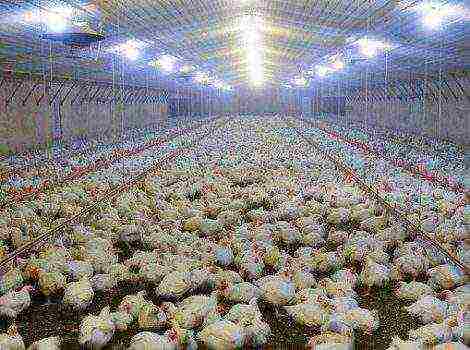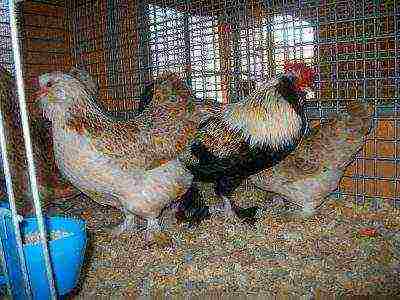Content
Description and characteristics of Agidel ducks
More and more people are turning to duck breeding on their backyards and small farms. Tasty and healthy, due to the balanced content of trace elements and vitamins, meat.
Fast and effective weight gain, not susceptible to many diseases inherent in other poultry. This makes ducks a favorite of choice for amateurs and professionals alike.
Consider the description and characteristics of the Agidel bird breed. Breeding work for this duck was started in 2000 at the "PPZ Blagovarsky" of the Republic of Bashkortostan, in 2003 the first results were obtained. The improvement of qualitative and quantitative indicators does not stop today.
Agidel duck: breed description
Ducks of the Agidel breed have a long and large head, a wide beak of a white-pink hue. The eyes are dark, set high. The neck is of medium thickness, relatively long. The chest is deep and protruding. The back is long and broad, the body is well set and almost horizontal. The plumage is white, complete absence of yellow, cream and other shades. Legs are short, of medium thickness, light orange in color.
The temperament of the Agidel duck allows to ensure its maintenance, both in pens and on grazing, without losing any indicators of the obtained carcasses. The perception of ducks as constantly screaming and screaming around the yard or paddock, in search of food, can destroy this breed. Calm behavior, measured movement and the transition to shouting only in case of danger add to their nobility. The absence of unnecessary fuss allows feed to be absorbed more rationally and to bring the maximum possible weight gain in a short time.
The presence of a reservoir will be an advantage for keeping and breeding ducks. In his absence, you should not be upset. Agidel will live well without a reservoir, but in this case it is necessary to provide access to water during the day, and for young animals at night.
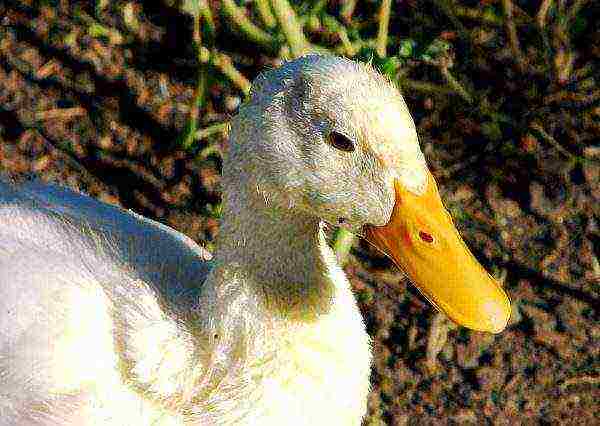
The work of breeders when working with these ducks was aimed not only at improving meat and egg production, but also at resisting diseases and infections by individuals. The result achieved by scientists makes it possible to talk about the breeding of this bird, both on an industrial and on a home scale. Considering the rapid weight gain and the high ratio of consumed feed per kilogram of gain, many have made an economically sound conclusion about the advisability of working with agidel.
Duck characteristics
Agidel ducks are characterized by rapid weight gain. With proper nutrition and favorable conditions at 6 weeks, the weight of a drake averages 3.2 kilograms for a drake and 2.95 for a duck. Overexposure of the bird population for a week from this control point will result in a reading of 3.79 for the male and 3.46 for the female. Further maintenance does not lead to a significant increase in weight, the feather coarsens. The long-term maintenance of the heads involved in the breeding of the herd is justified.
Feed consumption can vary from a large variety of indicators and conditions, but according to data from large producers and forums of owners of household plots containing this duck, this indicator is close to 2.25 kilograms of feed per 1 kilogram of gain... The increase in this figure was mainly due to the dishonesty of poultry farms selling under the guise of A3 (broiler) line A5 (egg). According to this indicator, Agidel belongs to broiler duck breeds.
For a private backyard, a very important characteristic of a particular breed is the natural safety of the livestock during the period of full maturation. In ducks of the Agidel breed, it is one of the tallest among these birds. Safety for the period from birth to 6 weeks is 98.5%, not significantly decreasing over the period 0-7 months to 97.5%. This is an additional argument in the choice of birds of this particular breed.
For a breed that is considered a broiler, andgidel has good egg production... A duck can lay from 225 to 260 eggs, depending on the line of the cross. Do not forget that the higher the egg production of your bird, the lower the boundary weight will be and the higher the feed consumption for growth. The egg is large, with a well-formed oval.
Weight usually ranges from 77 grams for an egg line and up to 95 grams for a broiler line. It becomes obvious that the total egg weight of the two lines during the productive period will be the same. Considering the greater consumption of feed for the egg line of the cross, we get confirmation that the agidel is a beef breed of ducks.
The use of duck eggs in home cosmetology was already known to our grandmothers. Oily skin, our older generation, fought with the protein of these wonderful eggs. This is due to its properties to tighten skin, tighten pores and remove shine. The yolk has a miraculous effect on hair growth and restoration, nourishes dull and brittle hair. Whole duck egg is a common mask ingredient for combination to dry skin.
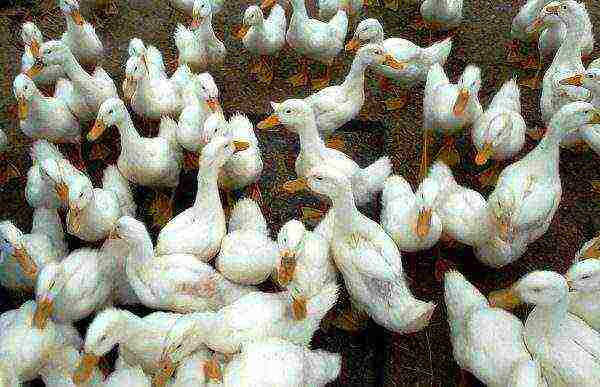
Breeding and raising the breed
The first question, when deciding to breed ducks of the Agidel breed, will be the use of an incubator or replanting of a brood hen. Since this duck was bred by crossing various breeds and crosses, raising new offspring is more profitable from an incubator.
It should be noted that in these birds, the rate of fertilized eggs reaches 94%... The hatching of ducklings from hatching eggs remains at the level of 80% and can be attributed to the disadvantages of this breed. There are no special requirements for incubators.
To minimize losses at this stage, it is enough to follow the following recommendations:
- Select eggs for laying by examining them carefully. They should be as fresh as possible and without visible cracks, sagging or bumps, uniform over the surface of the shell.
- Carefully monitor the maintenance of the temperature regime. The experience of many poultry farmers suggests the following temperature changes depending on the period of eggs in the incubator:
Period temperature 1-14 days 37,7 +/-0,3 15-21 days 38,3 +/-0,3 22-26 days 38,7 +/-0,3 - Turn eggs in the incubator at least 10 times a day to prevent the embryo from sticking to the shell and freezing.
- In the first week, maintain a humidity of 60-70% in the incubator, then reduce to 45% until hatching. When the ducklings start to hatch, increase the humidity to soften the shell.
- Chill the egg at least twice a day. Maintain equal intervals, duration 10-30 minutes.
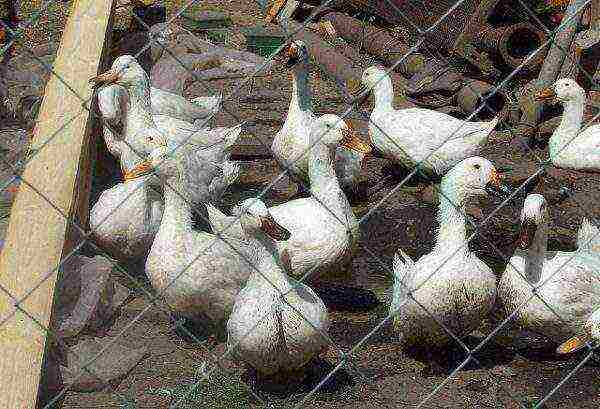
After hatching ducklings, take care of the temperature and lighting.... For the first days of life, lighting should be around the clock. Gradually decrease the intensity, not the number of hours of work.
Ducks are metabolism-intensive birds and are not uncommon for nighttime meals.Access to water is needed at all times; for young animals, the design of the drinker must prevent splashing. Dry litter is a guarantee of health and survival of ducklings.
It is better to produce food using ready-made mixtures or crushed grains, gradually adding greens, whole grains and corn and sunflower cake to the diet. Agidel is a breed of ducks that prefers grain to grains and mixtures. If you need to switch to another type of feed, do not do it abruptly. For some time, 4-7 days, feed with both feeds, after which, gradually, remove unnecessary feed. The main requirement for the diet of ducks is its balance and the presence of the whole complex of vitamins and minerals.
The most significant achievement of breeders in the breeding of this breed was its immunity to many diseases characteristic of most ducks. The leukemia group of diseases is a scourge for many subsidiary farms that breed ducks.
Agidel is a duck not susceptible to these diseases. The main signs of the disease of an individual are a decrease in physical activity, refusal of food and water, and lowered wings. If such a duck is found, isolate it from the general herd and carefully observe other birds. See your veterinarian as soon as possible. This will help to identify the nature of the disease, and prevent the death of the rest of the flock.
Advantages and disadvantages of the breed
- Fast weight gain.
- Resistance to disease and infection.
- Quality feather and down.
- High egg production for broiler breeds.
- Adaptive qualities of individuals.
- Taste qualities of meat.
Disadvantages of the breed
- Fat content of meat typical for broiler breeds.
- Getting a brood from an incubator.
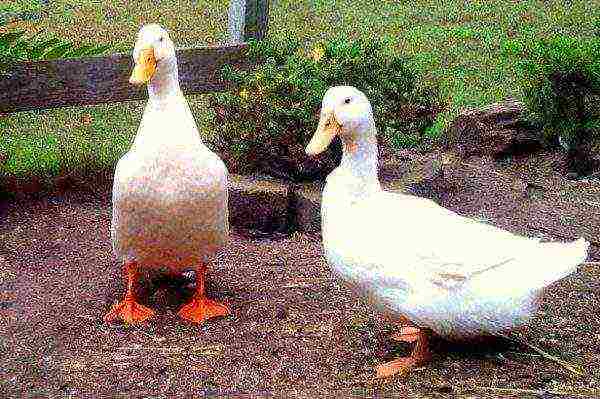
The Agidel duck is suitable for obtaining nutritious and tasty meat, both for a small backyard and for a large farm. Taking into account the characteristics of the breed and its breeding, a small livestock can satisfy the need for meat from a fairly large family.

